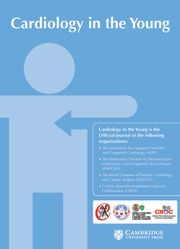No CrossRef data available.
Article contents
Closure of small fenestrations without optimal rims with a PDA coil far from primary atrial septal defects: a new approach
Published online by Cambridge University Press: 08 October 2024
Abstract
An ostium secundum atrial septal defect (ASD) is a CHD that can be treated percutaneously since 1974, mostly cases with only one main defect. In cases with fenestrations close to the main defect, a single occluder can be used for treatment because the discs extend beyond the waist of the device. In some cases where the defects are far from each other, they may require either more than one device or surgical closure. We present two patients in whom we observed fenestrations far from the primary defect. Initially, the main ASDs were closed with an ASD occluder, and then the fenestrations were closed with a patent ductus arteriosus (PDA) coil, resulting in complete closure of both defects. This shows that closing small fenestrations that are far away from the primary interatrial defect without rims and using other devices instead, such as a PDA coil, is feasible and can avoid the need for an open-heart surgical procedure; moreover, it is important to note that leaving these fenestrations open can have the same physiology as a patent foramen oval.
Keywords
- Type
- Original Article
- Information
- Copyright
- © The Author(s), 2024. Published by Cambridge University Press



